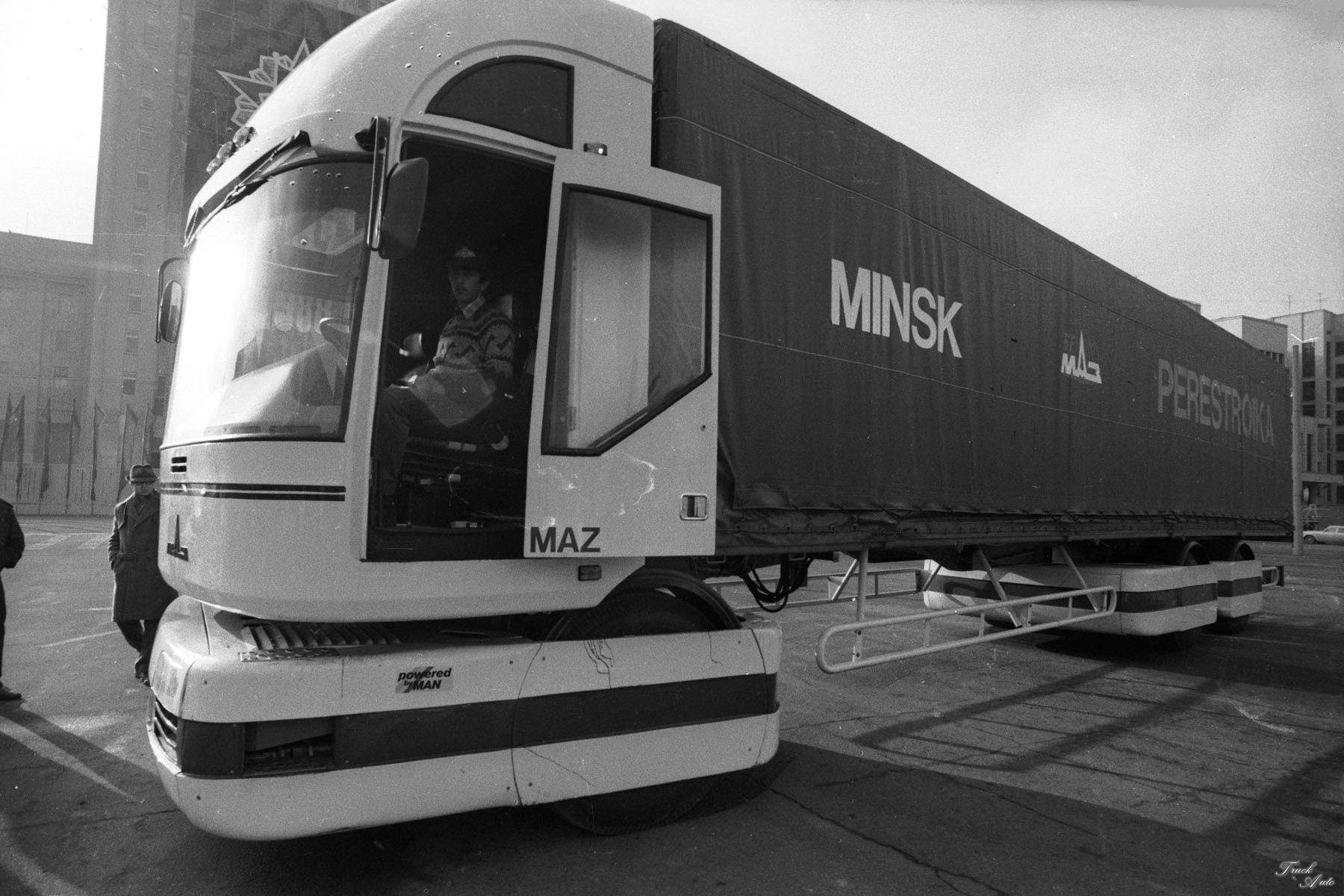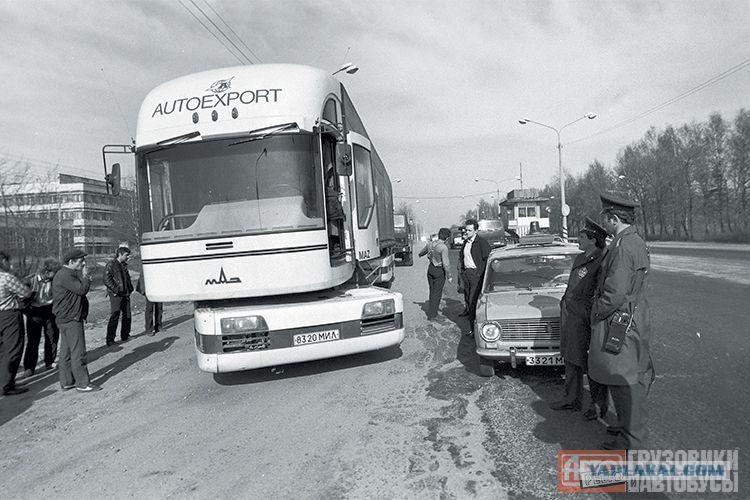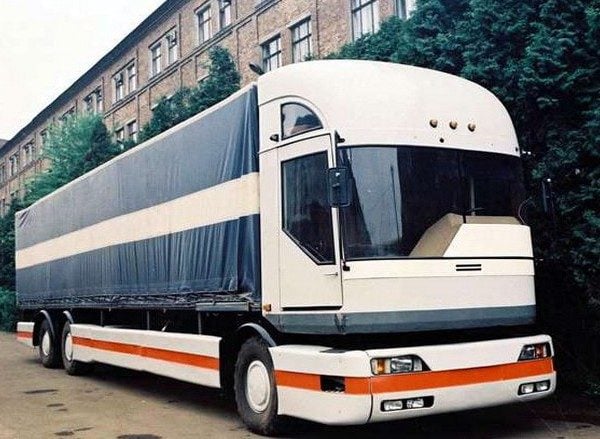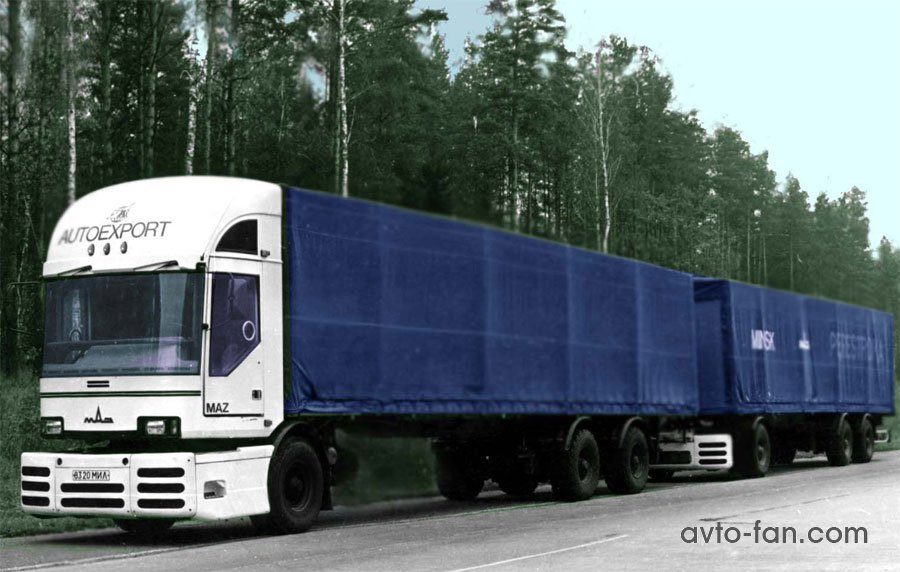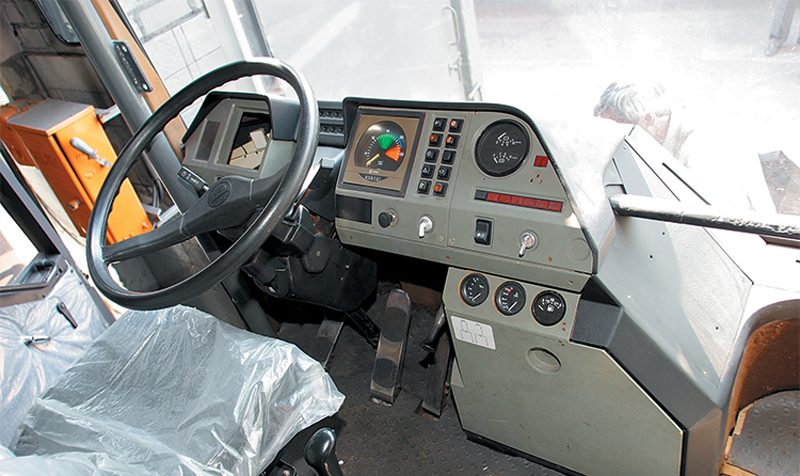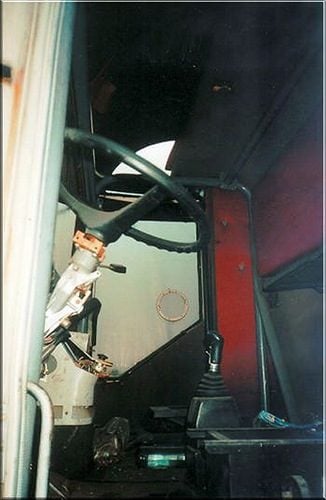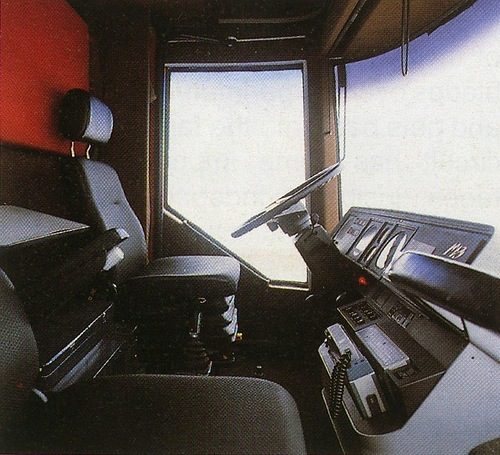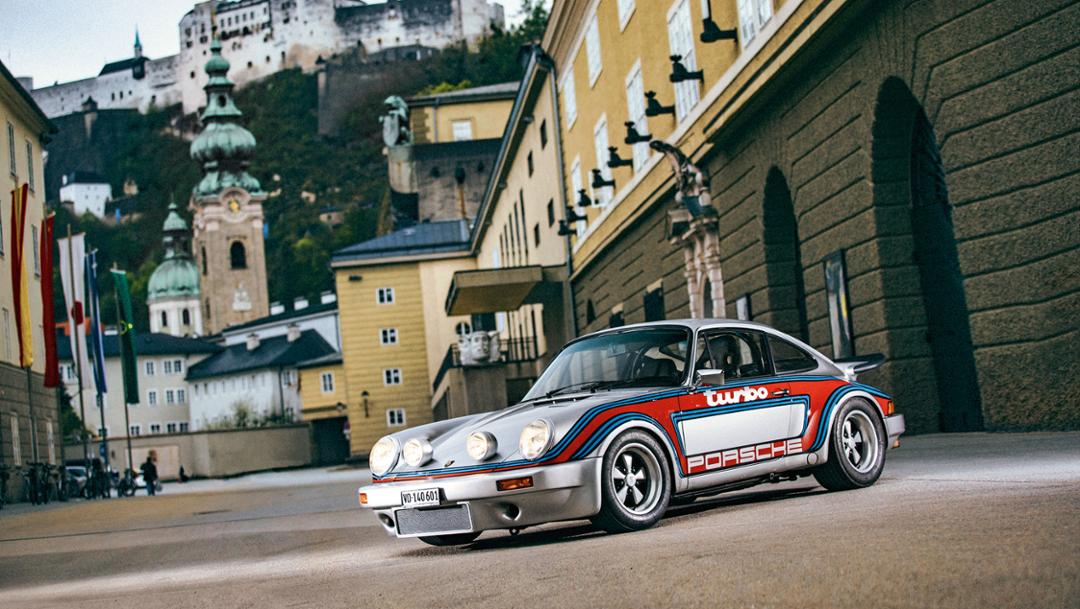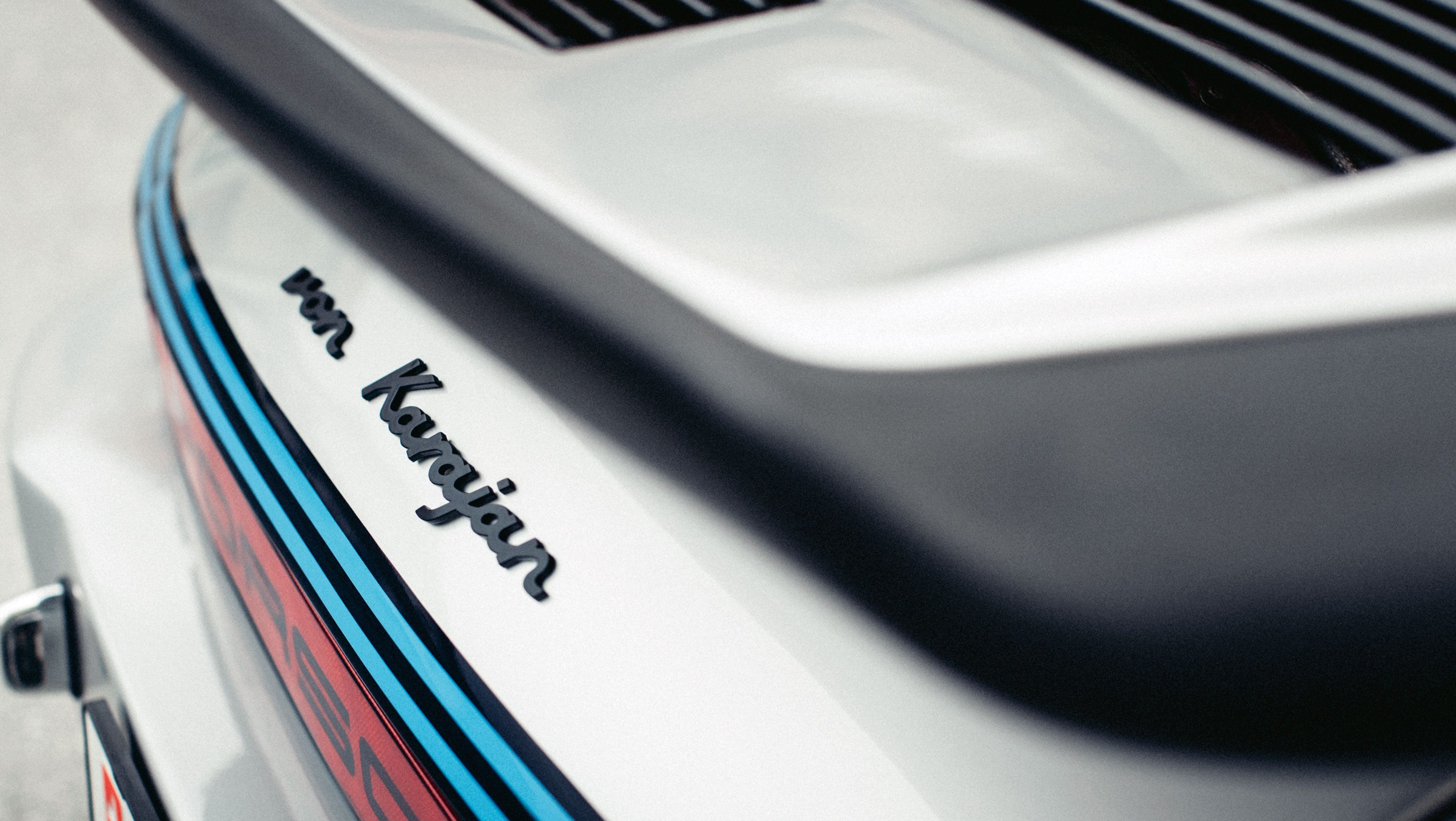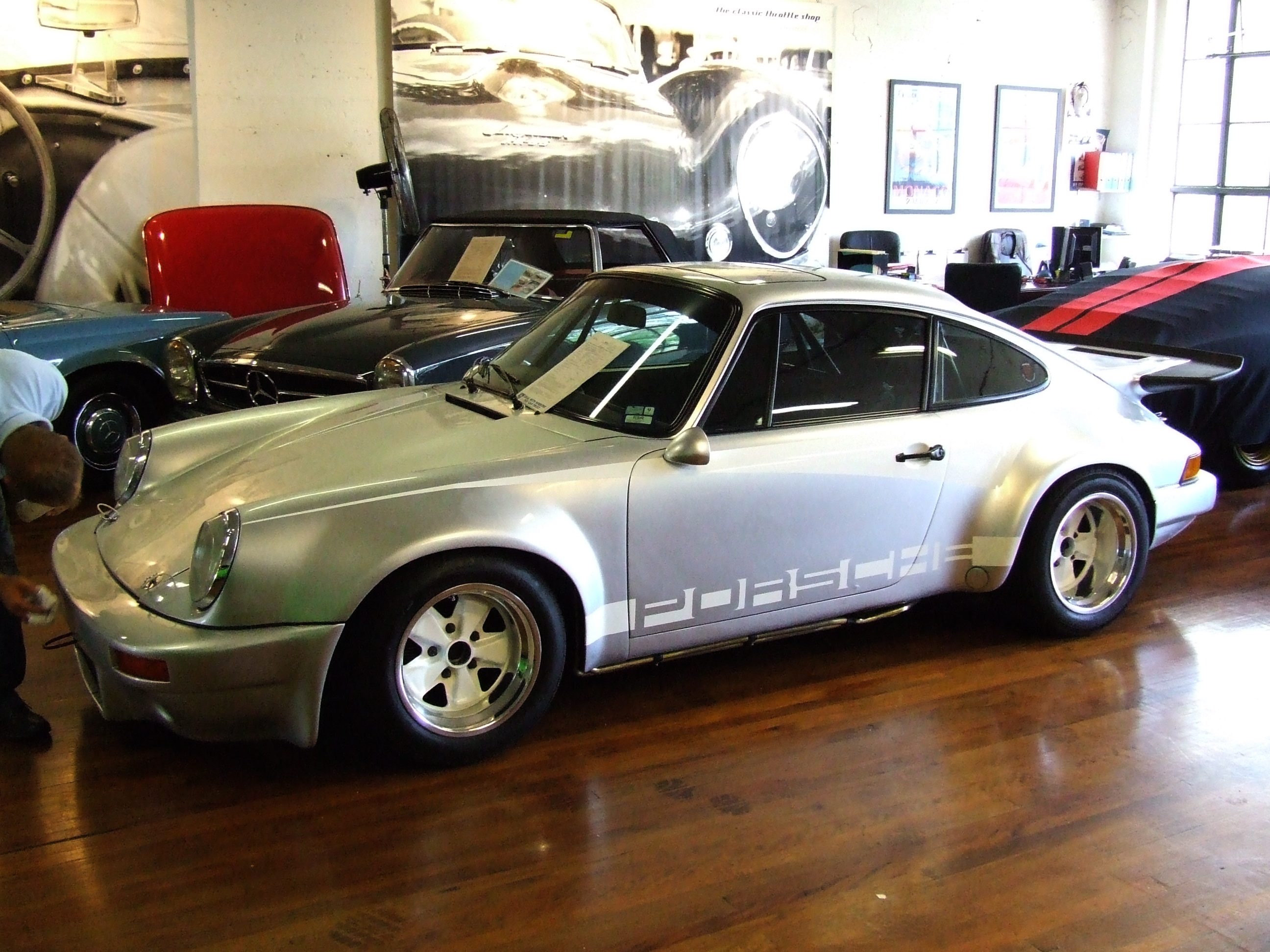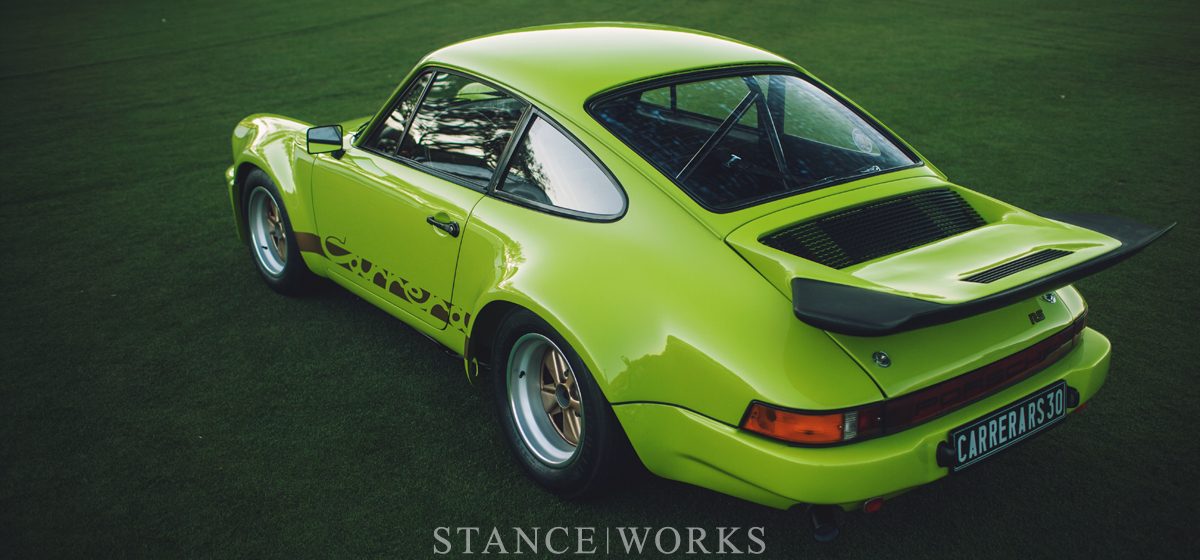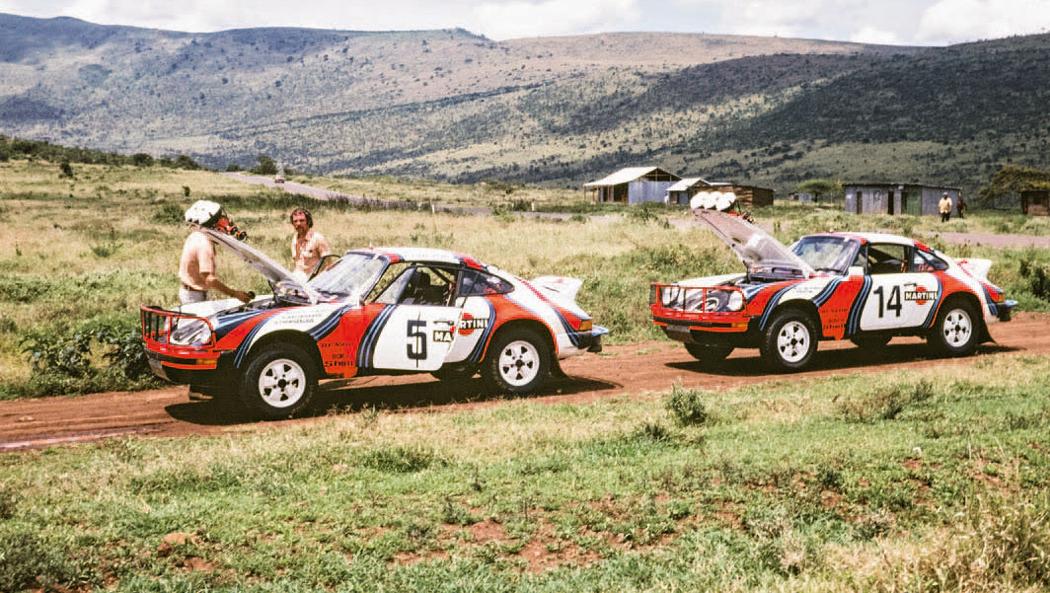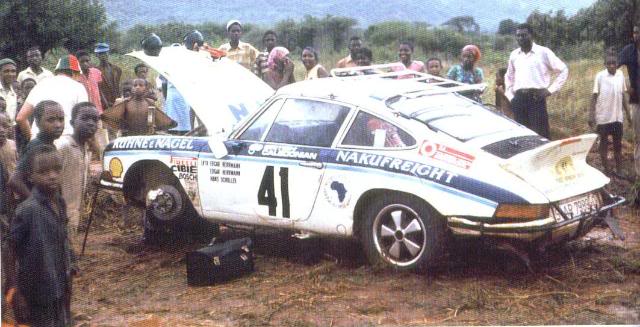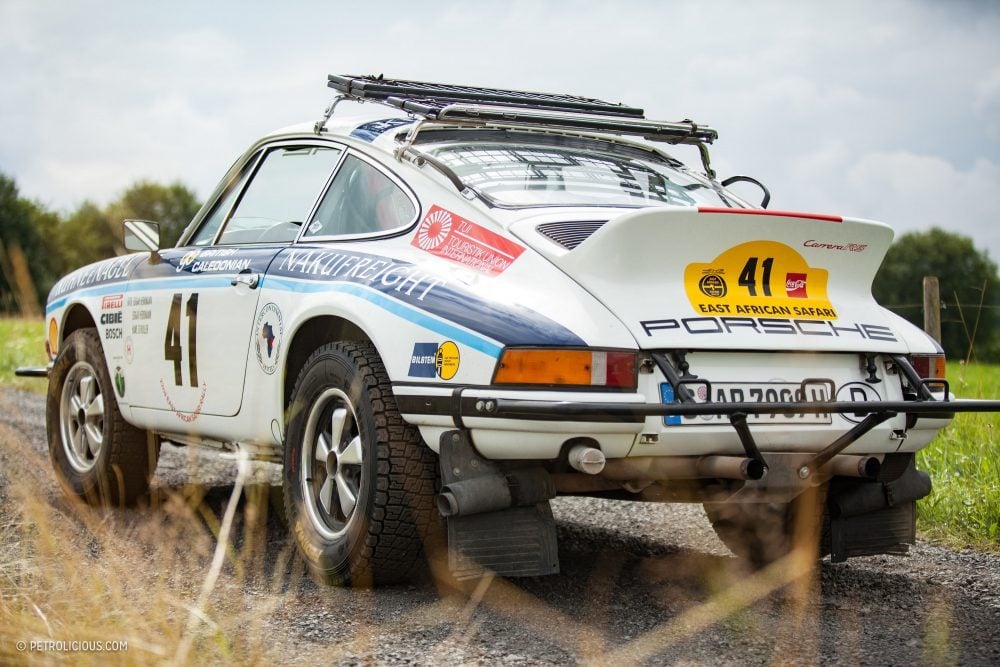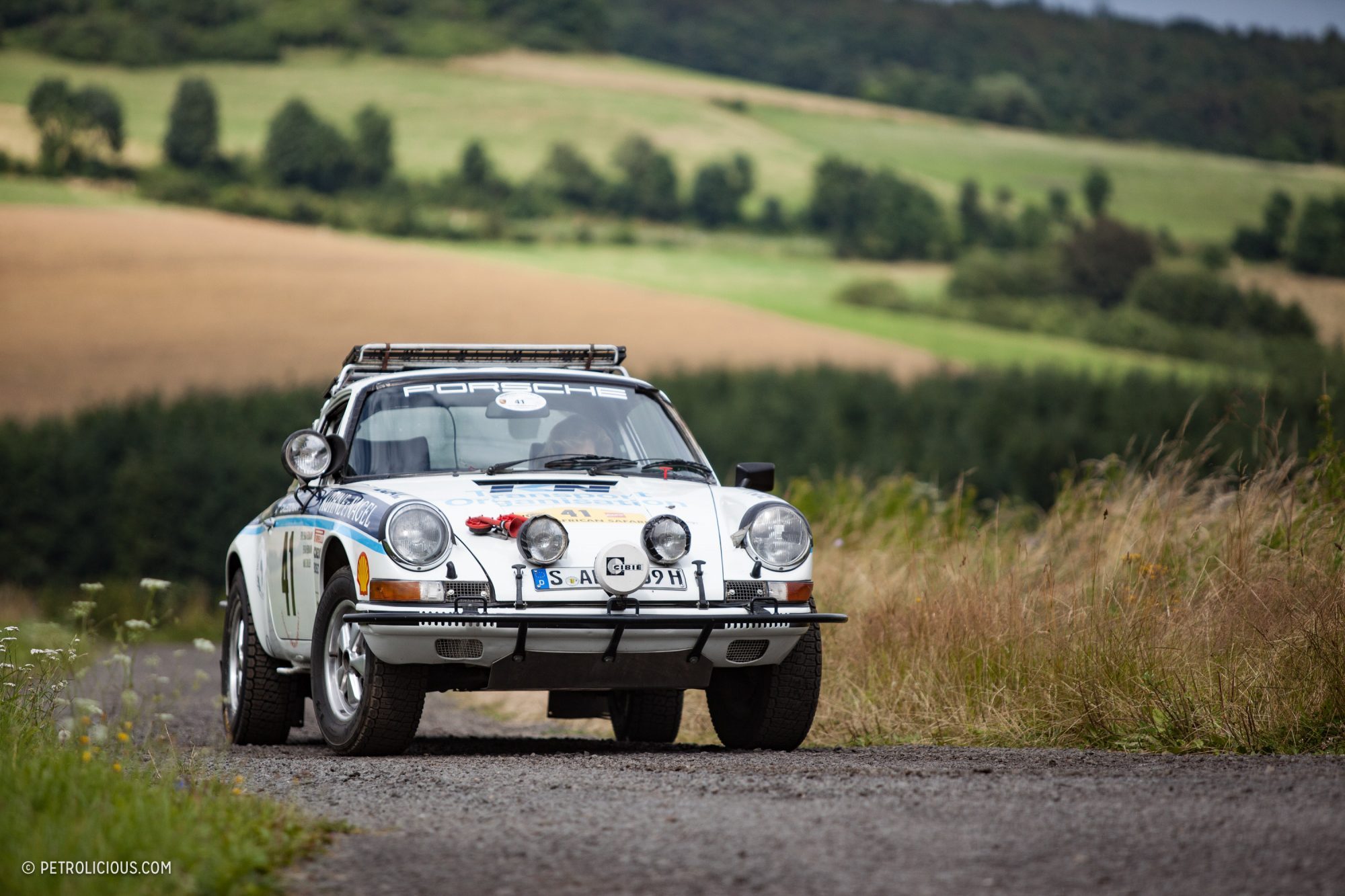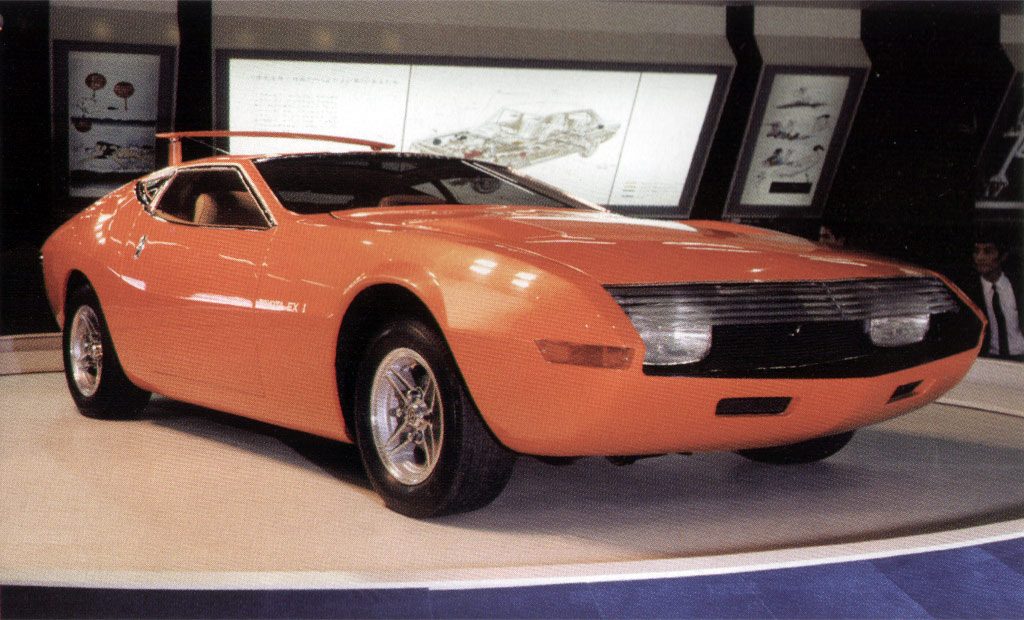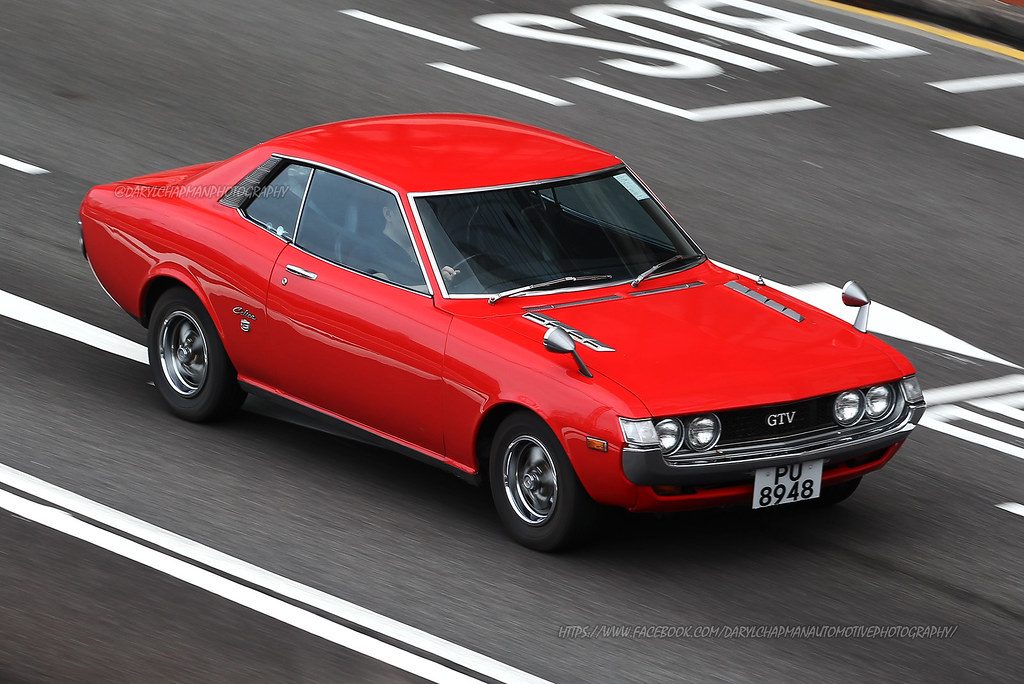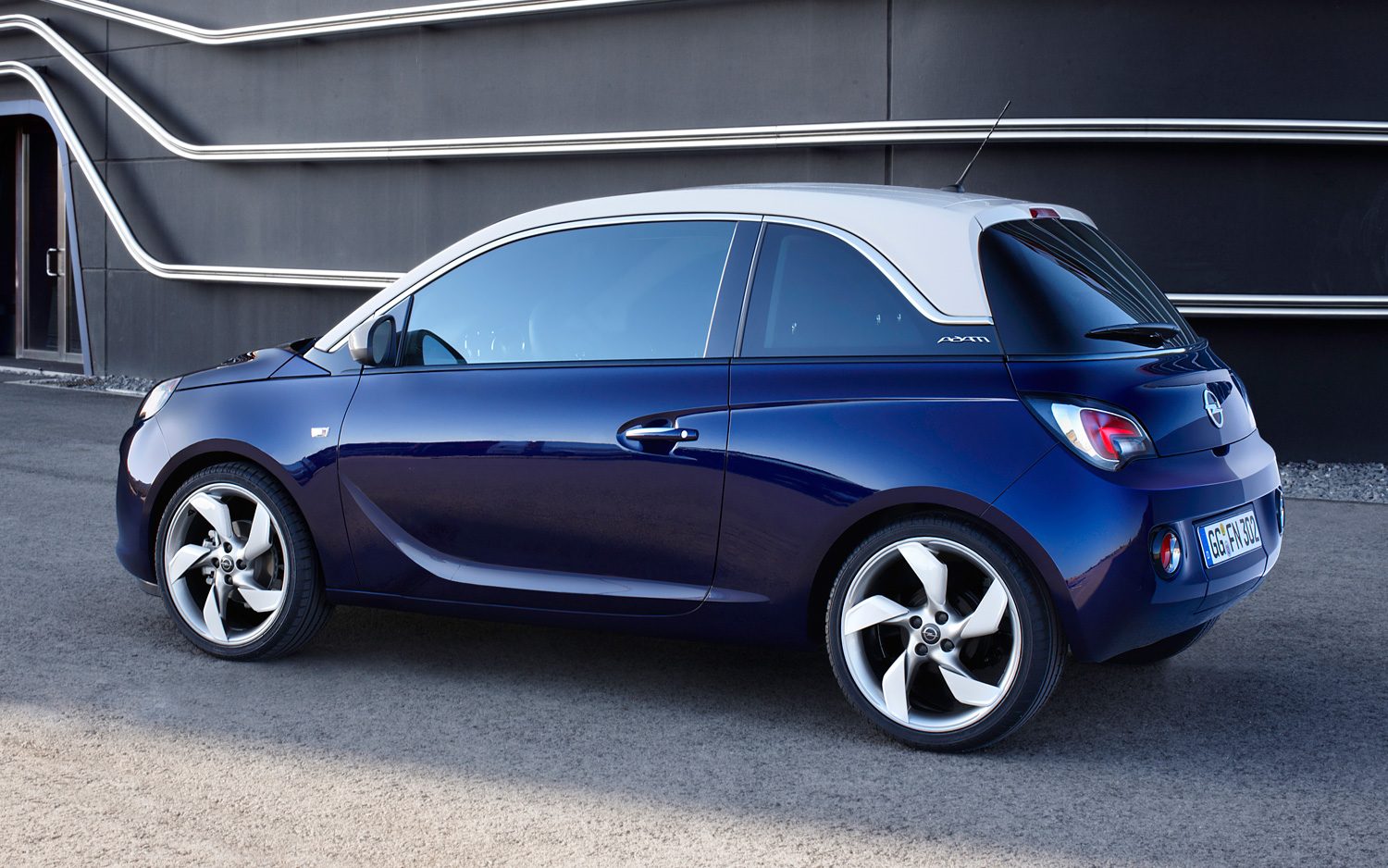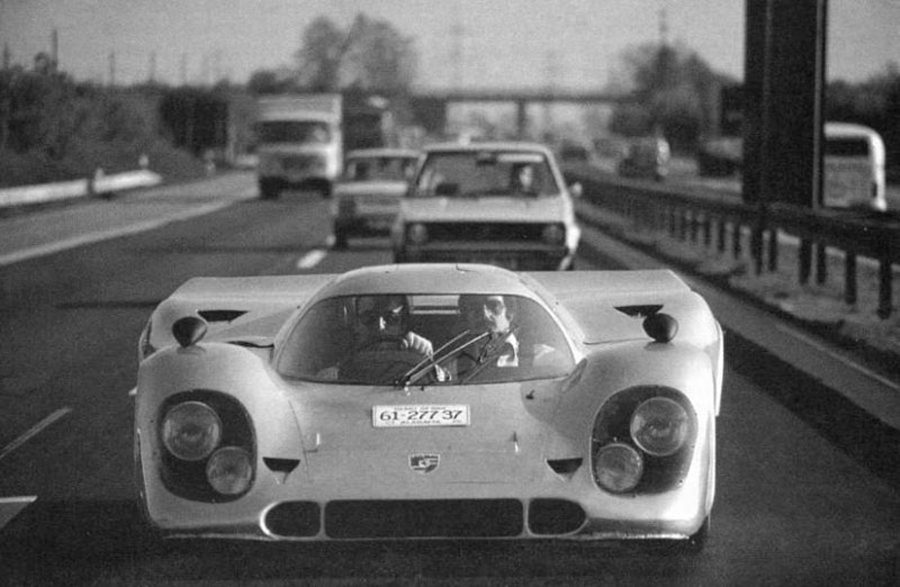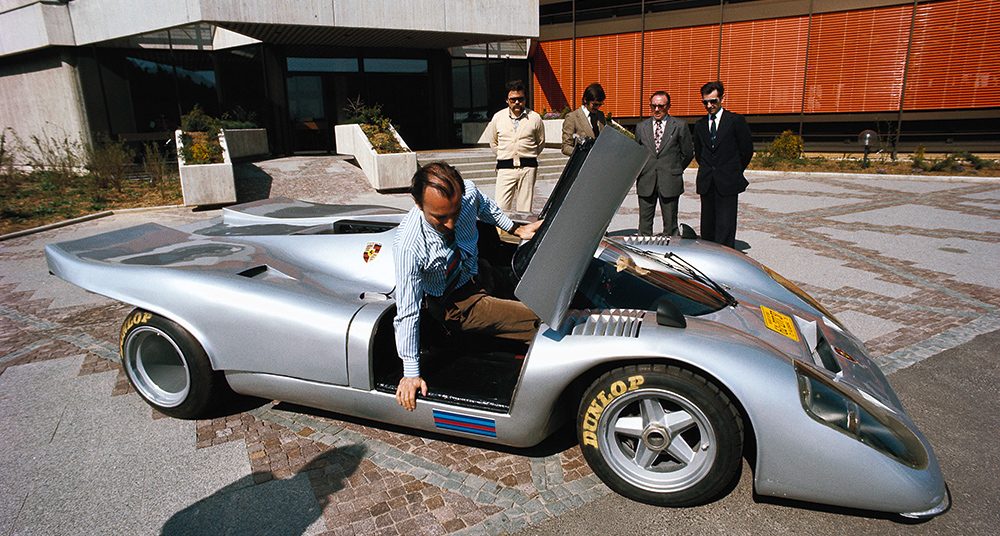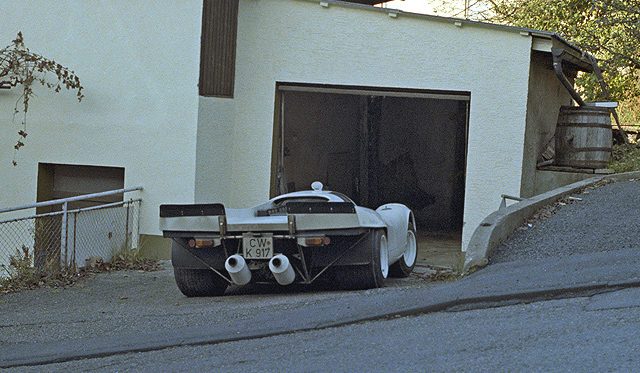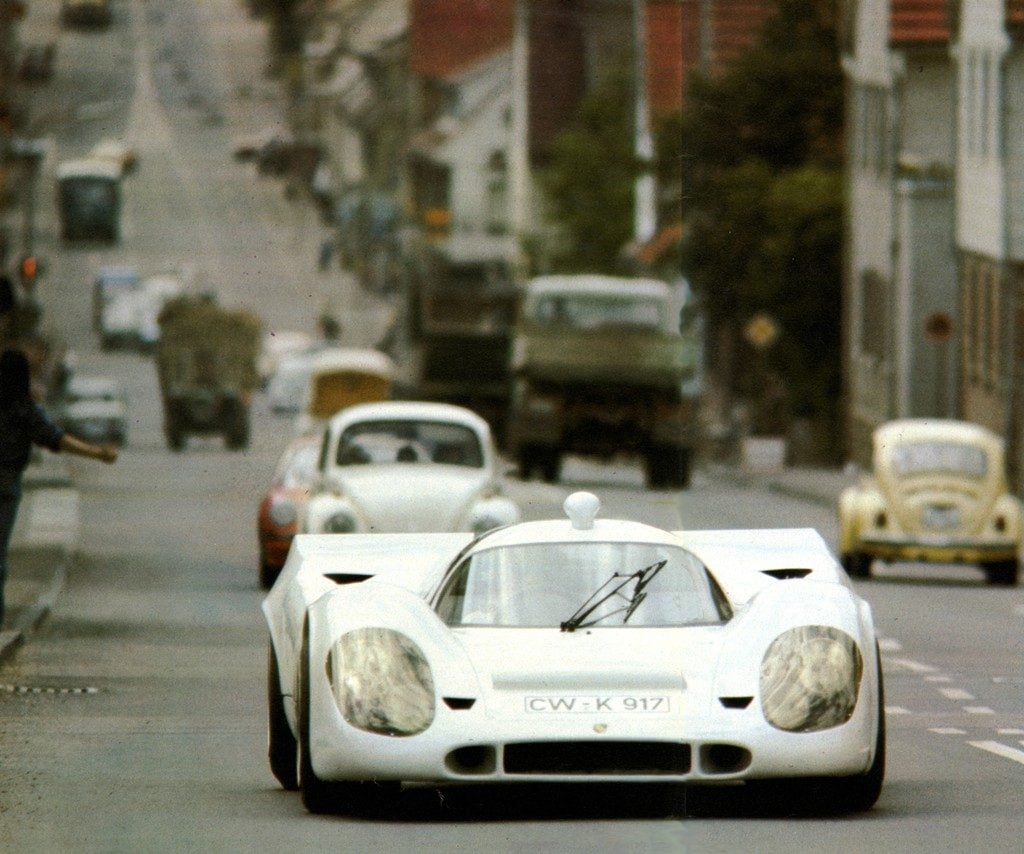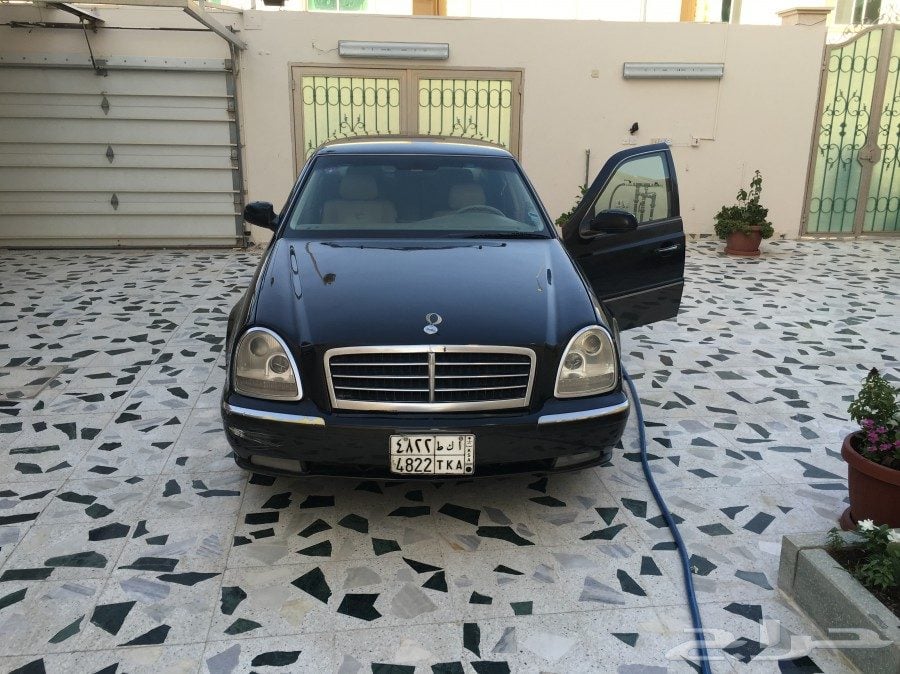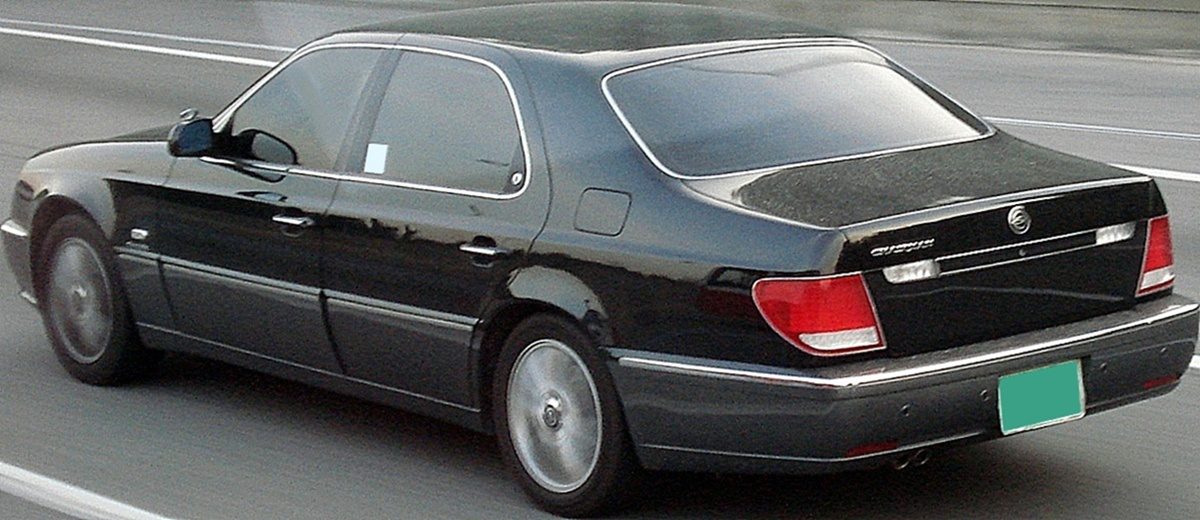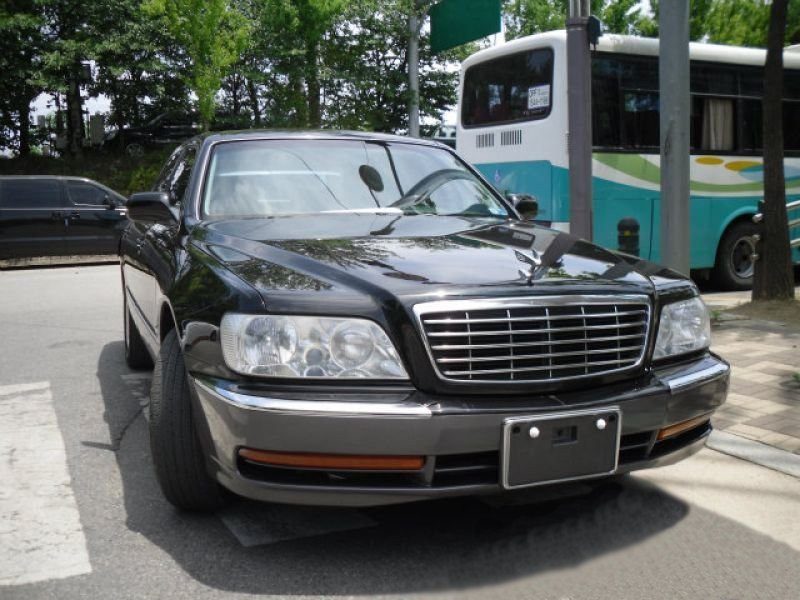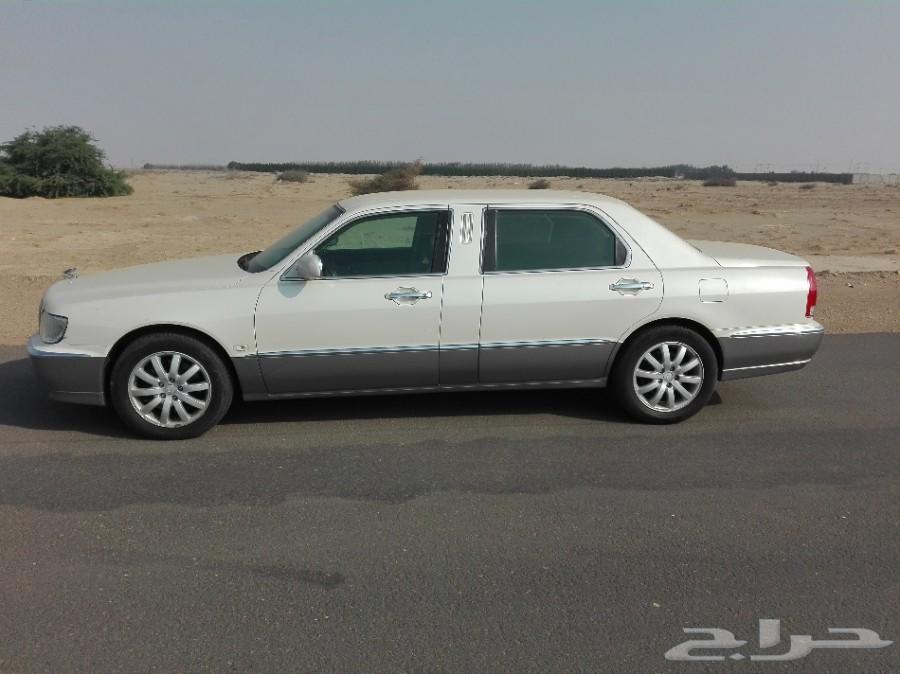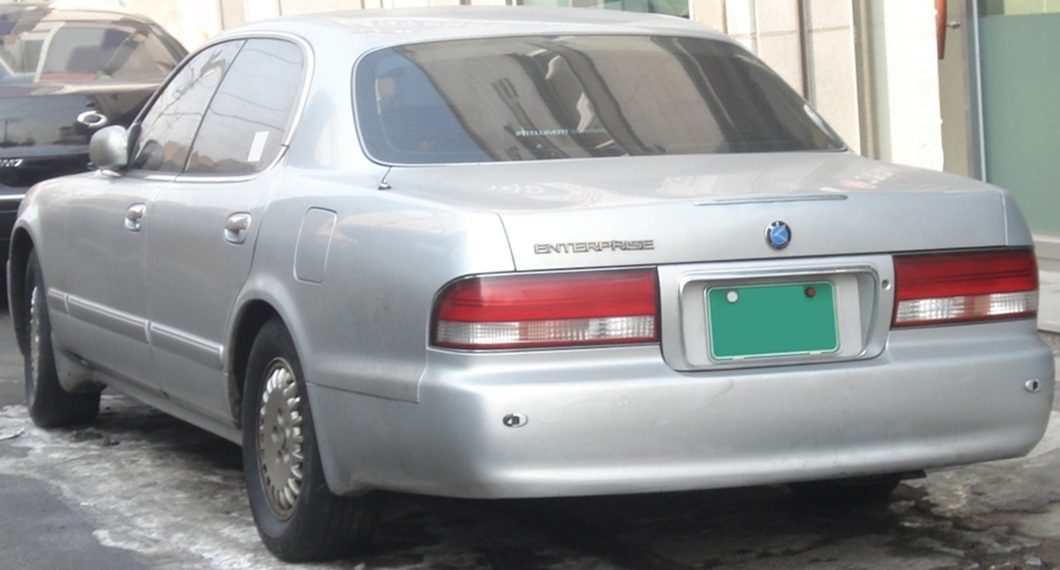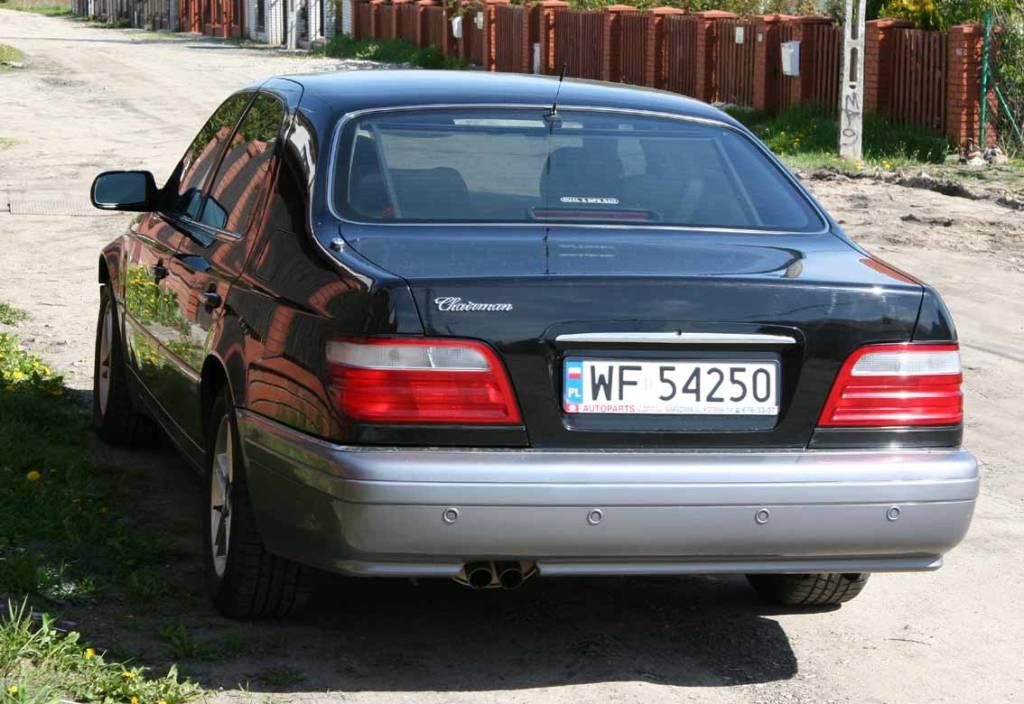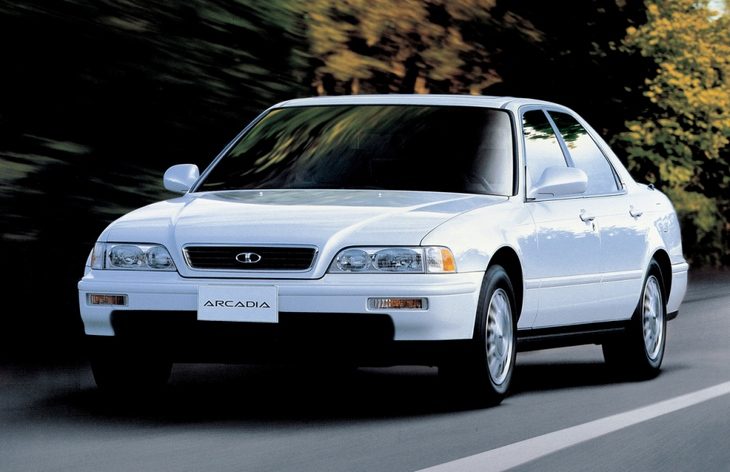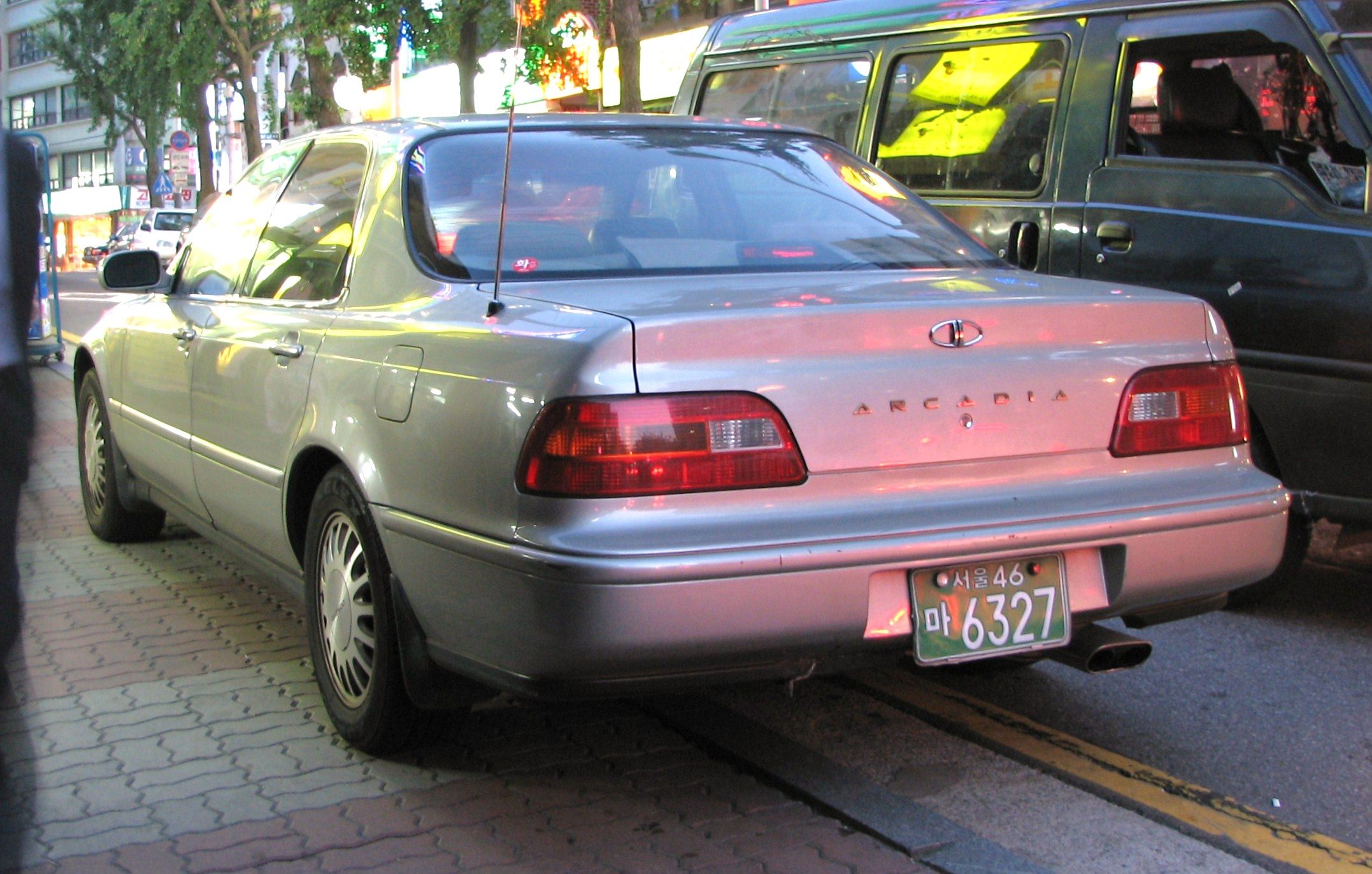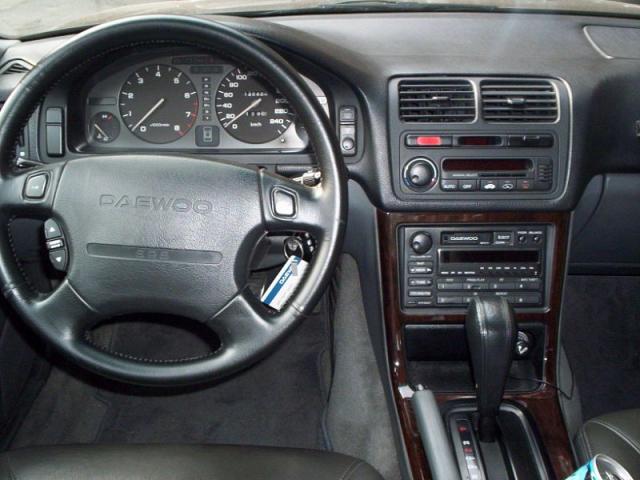Right, this one should be an interesting one, and probably quite unheard of in countries that weren't involved with the Soviet Union or, to some extent, Europe
This is the МАЗ-2000 "Перестройка" or, if we wanna use English letters, the MAZ-2000 "Perestroika" .
It's spelled with an "i" in English and on the trailer but the pronunciation is closer to a "y".
It was made in 1988, and it was intended to be a concept for a roadtrain(yes,
roadtrain), but it wasn't exactly what you'd call conventional.
As you can already see, the design was far from mundane, no matter if you're comparing it to trucks from 1988, or from present day. I'd imagine that someone could mistake it for an unused Back To The Future prop even. The design itself was made with aerodynamics in mind, streamlined for fuel efficiency, and also speed, to the point of wheel covers being present on this specific design. The top speed was 120 km/h, and while that might seem slow for a truck nowadays, the top speeds of trucks back then, like the Mercedes NG or the Scania 3-series were closer to just 90 km/h.
Even though you probably wouldn't get to use the top speed in the 2000 with a speed limiter installed.
^ A closer look at the truck itself, also showcasing that the cabin sliding doors, and a badge which tells you that the truck uses an MAN engine.
This specific design appeared at the 1988 Paris Motor Show
(called "Mondial de l'Automobile" at the time) actually, and as far as I can tell, the truck received high praise, to the point that it was awarded a gold medal in terms of technical solutions.
Now, as i've pointed out, the truck has wheel covers, even on the front wheels, so if we were to assume that the truck would have used the steering system seen is just about most other vehicles, that the wheel covers would prevent the wheels from turning, and they would.
But of course, it's not like the designers didn't notice, infact, they've had a different plan.
...Yep, this is how it steers, couldn't have won a gold medal at an autoshow if it couldn't steer, could it?
According to a scale model of the truck, the trailer's rearmost axle could also potentially steer?
You see, the MAZ-2000 wasn't assembled like most other trucks, in a normal truck, you'd have the truck itself, and a trailer that you hitch onto it from some company.
The Perestroika, however, was divided into modules.
^ Interestingly, the initial prototype, despite not having wheel covers, attempted to extend the panels on the lower part of the trailer
^^ Presumably this was changed for an easier time with the steering radius.
First you have the cabin module, necessary for a driver to be able to actually drive the thing, along with a seat for a passanger of course, secondly it had its own trailer module, which is necessary for being able to carry and deliver stuff like a normal truck, as well as the previously-mentioned aerodynamics, and last but most definitely not the least, the hauling module, which has the 12-speed manual gearbox, the previously-shown steering, and the engine, a 290hp flat 6-cylinder diesel with 1200 N m of torque, all of which are quite obviously necessary to make it go anywhere.
The problem with the module idea came in the form of, not only the steering being complex to work with in traffic and other tight places, but also everything in the hauling module being hard to repair.
But to be fair, Europe already decided to go with caboover trucks which are less easy to tinker with compared to longnose trucks
But with more of the second and the third modules, you'd be able to change the 2000 from a single-trailer truck to something closer to an actual roadtrain.
Conveniently, this photo not only demonstrates the usage of extra modules, but also a later, alternate design. Which seems to have sacrificed some of the aerodynamics to make it look somewhat closer to a regular truck
and presumably to cut down the cost of the truck and/or the extra modules, which would have been quite necessary in a Soviet country, the more mundane design is also exactly the reason why I myself prefer the one from the three first pictures.
That said, despite the front wheels being open now, it seems to have retained the steering system from the previous design.
...And yet the closer-to-mundane design
(with a 6-wheel trailer as opposed to a 4-wheel, this was gonna be an option had the truck made it into production.) is the one that got restored in 2010 to display at the Minsk vehicle factory, the aerodynamic variant being previously scrapped for metal. It got a makeover in the restoration process, too, with the red cab and the black hauling module.
"And yet these types of trucks are nowhere to be seen on the roads, so what happened?"
The fall of the Soviet Union, that's what! Once it fell, the MAZ Perestroika project was "halted" for good.
"...But it was shown in France, so everyone else had to have seen the idea, right? And it has potential, so why didn't other brands attempt to make their own modular trucks?"
That's a fair point, and MAZ didn't seem to patent the concept of a modular roadtrain, but the problem here is that you'd need to severely redesign the infrastructure of freight transport, as well as the standards of technical specifications and requirements for trucks for a modular roadtrain to be even considered anywhere else.
With that said, the concept of a modular roadtrain might possibly re-emerge when there's demand for it on the off-chance a transport corridor from Europe into the Far East ends up being made, but that's most likely wishful thinking, as it would rely on two big "if" conditions.
These are the best interior pictures that seem to be available, note how different the first one is from the other two
(you might need to quote the post to see the second one, doesn't seem to appear in the preview, but if that doesn't work try this link), so we can presumably deduce that the first one is from the white-blue-orange prototype in the fourth picture, as the interior proportions match better with that one.
Should also mention that the latter two interior pics were found on a long but seemingly
well-researched post on another forum, i'd imagine that it covers way more details
and is possibly more accurate than my post here, as well as way more pictures, but it's also in Russian so serious translation would be required.
and this post took long enough to write and probably read already.

